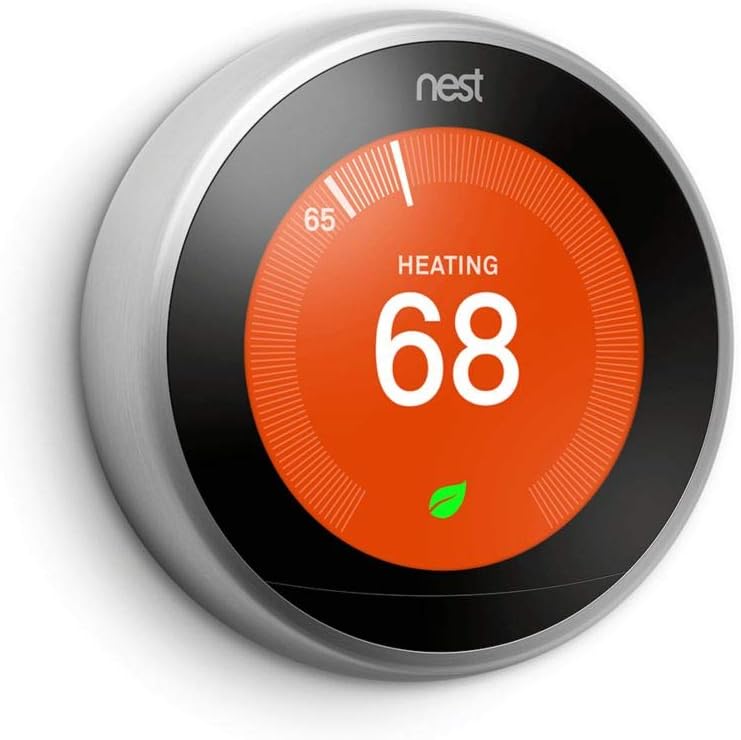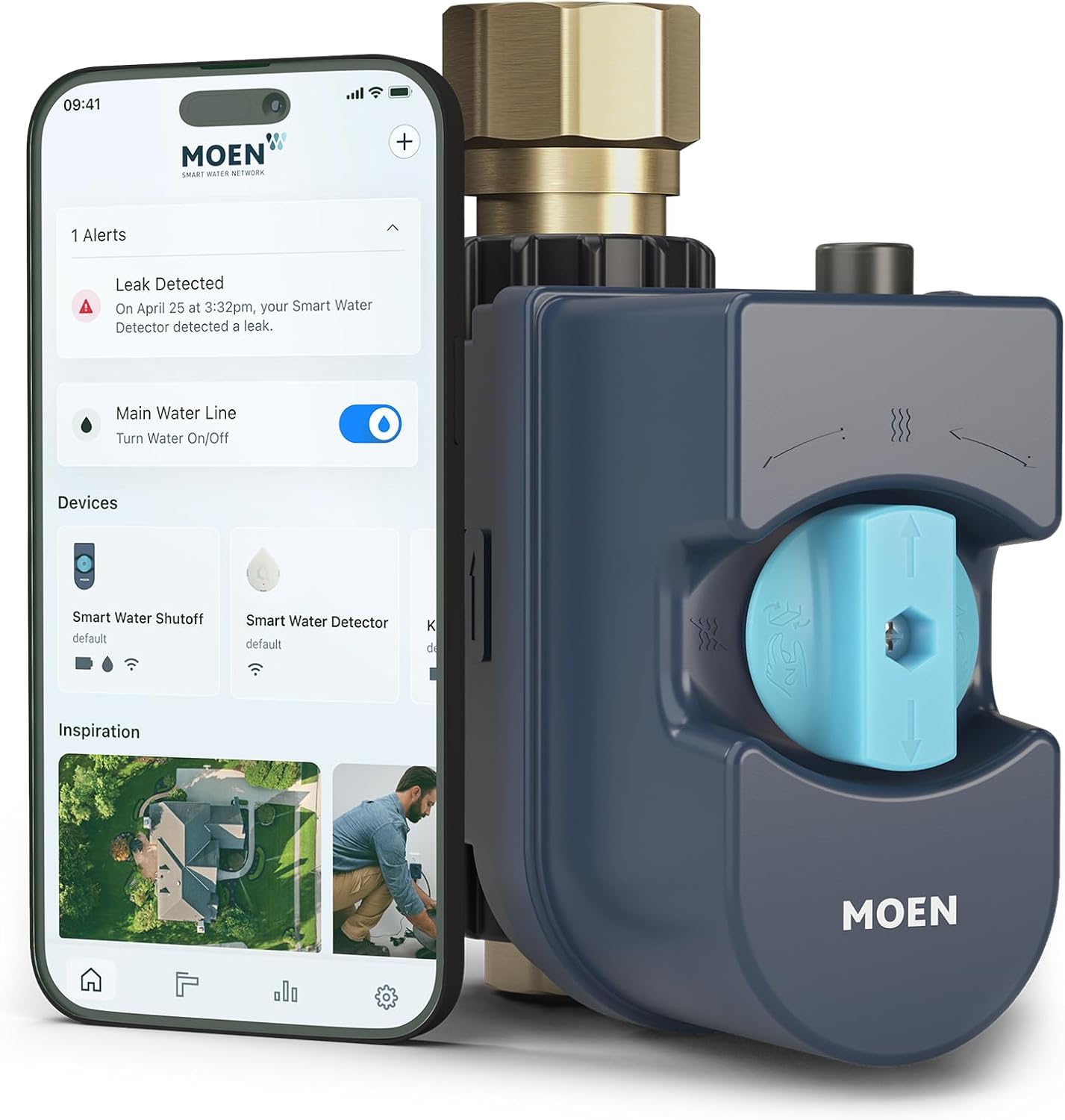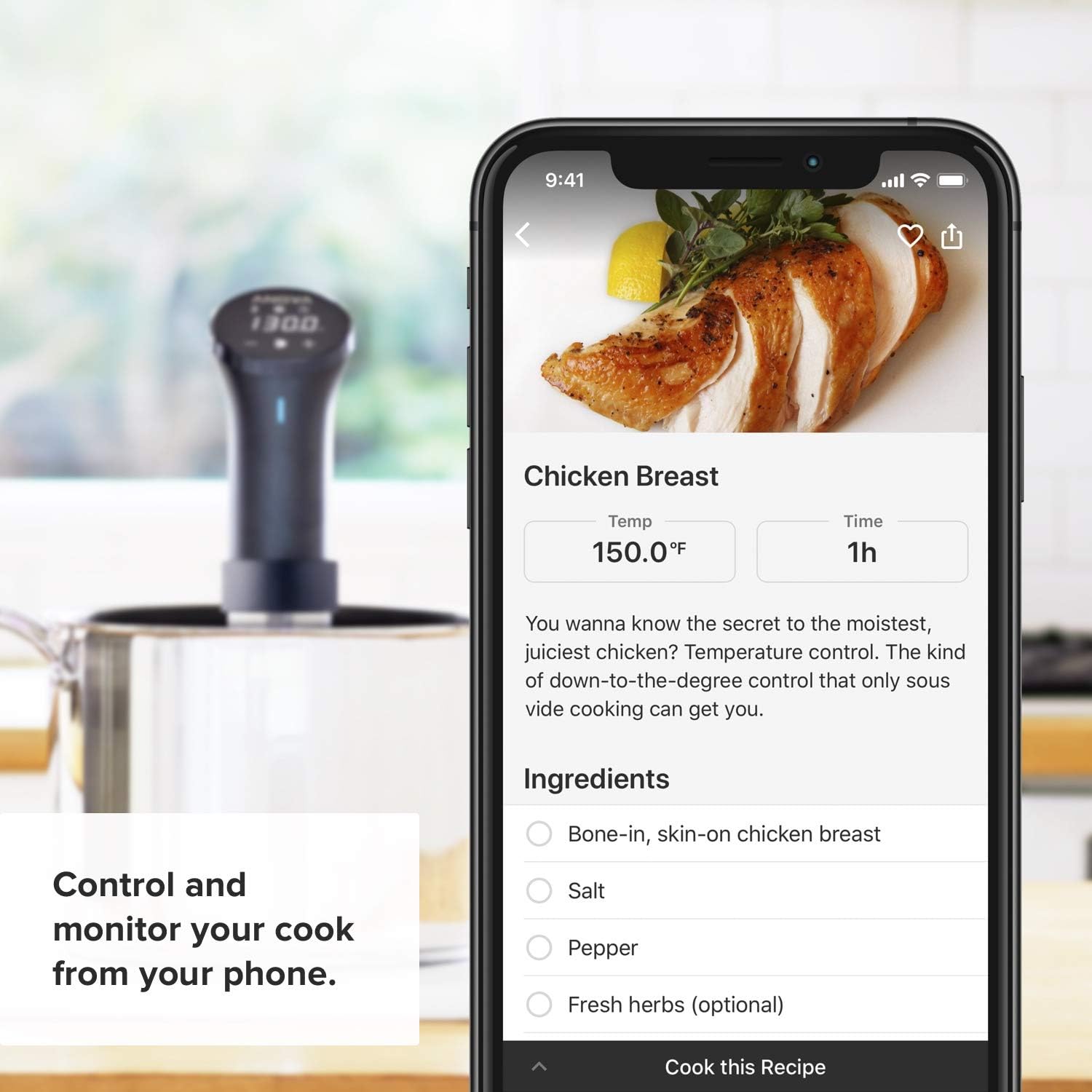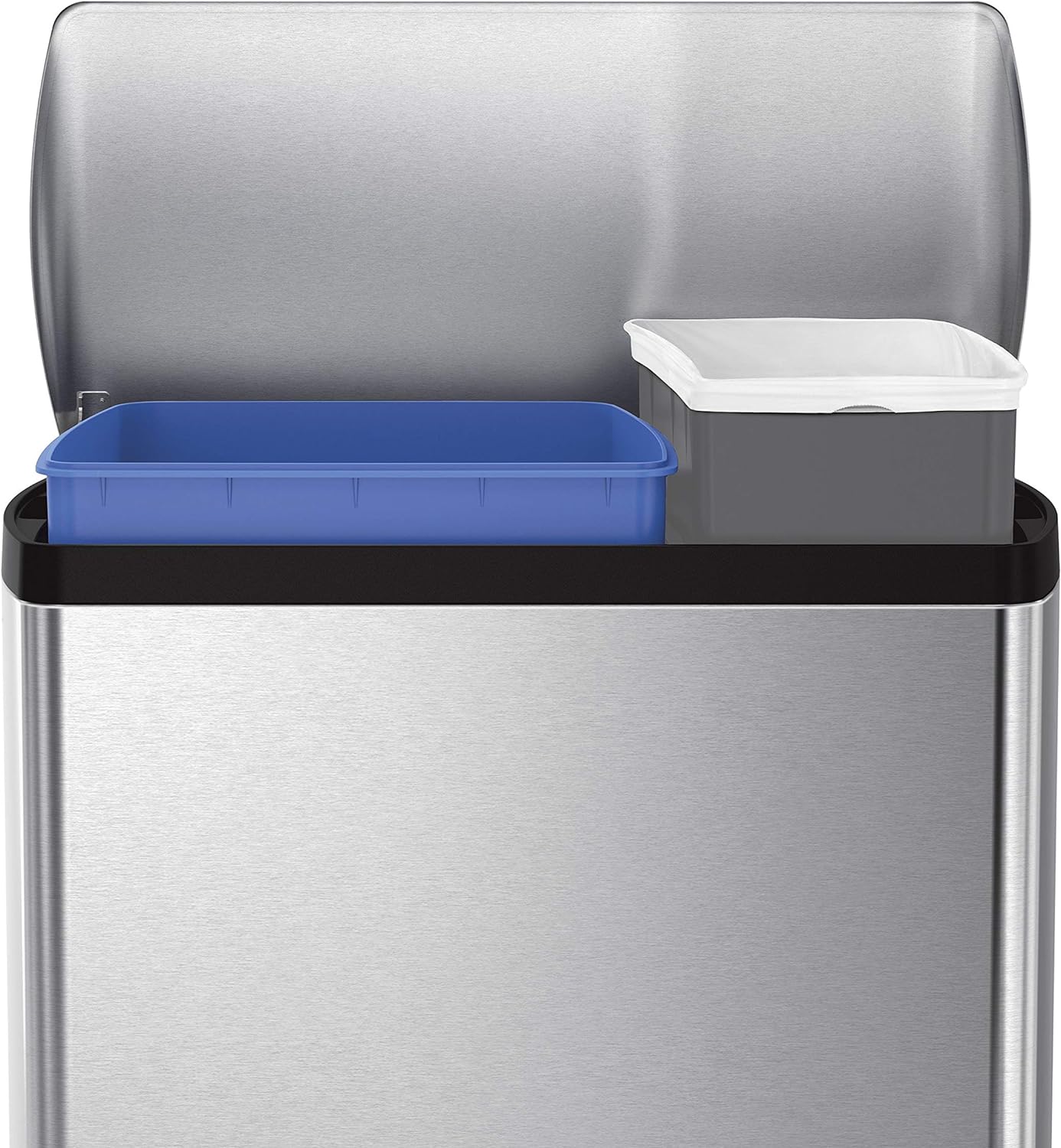Why Zero Waste Matters

The average American produces over 4 pounds of waste daily, most of which ends up in landfills, according to the Environmental Protection Agency (EPA). That’s nearly 1,500 pounds of waste per person annually.
This waste not only contributes to the growing landfill problem but also releases harmful greenhouse gases that accelerate climate change. Plastic, food waste, electronics, and paper are among the most common items tossed out, most of which could be reduced, reused, or recycled.
A zero-waste strategy aims to minimize what we throw away. The goal is to send as little to landfills as possible by reducing consumption, reusing materials, and recycling or composting what remains.
Smart home technology offers practical and even easy ways to cut down on waste and live more sustainably. They are designed to automate everyday tasks, making your life easier while simultaneously helping you waste less.
Energy Efficiency for Reduced Waste
One of the simplest ways to reduce waste is by conserving energy. Many of us unknowingly waste energy every day—leaving lights on, setting thermostats too high or low, or using inefficient appliances.
Smart home devices like smart thermostats, smart lights, and energy-efficient appliances play a significant role in minimizing energy consumption. This also reduces the wear and tear on your devices, meaning they last longer and create less electronic waste over time.
For example—if you don’t already have a Smart thermostat—this Google Nest Learning Thermostat learns your schedule and adjusts the temperature accordingly, reducing unnecessary heating or cooling. It is Energy Star certified.

According to the EPA, using even a decent smart thermostat can save up to 10-12% on heating and 15% on cooling bills. Fewer energy resources used means fewer waste emissions from power plants. Over the course of a year, this can significantly reduce your household’s environmental footprint while also saving you money.
Another Smart Thermostat option is the Ecobee Smart Thermostat. With simple voice commands. Ecobee claims this device can save homeowners up to 23% annually on heating and cooling, and it has multiple sensors you can place throughout your home to optimize comfort in each room.

Smart Lighting Systems
Another major source of energy waste is inefficient lighting. Many homes use traditional incandescent bulbs, which are not only energy inefficient but also have a shorter lifespan compared to modern lighting solutions.
With smart lighting systems, you can automate when and how your lights are used, ensuring you’re only consuming energy when absolutely necessary.
Smart lighting systems like Philips Hue White and Color Ambiance bulbs allow you to schedule lights to turn off automatically or control them via smartphone apps, so you’re only using energy when needed.

These bulbs can be set on timers, dimmed, & adjusted to different color settings. The LED technology used in them means they last much longer than traditional bulbs—up to 25,000 hours, which drastically reduces the number of bulbs that end up in landfills.
According to the U.S. Department of Energy, LEDs use up to 75% less energy and last 25 times longer than incandescent lighting. Additionally, these smart bulbs integrate with most smart home systems, including Amazon Alexa, Google Assistant, and Apple HomeKit. This compatibility means you can control your home’s lighting with simple voice commands or through automated routines.
Water Conservation with Smart Devices
Water waste is another major contributor to household inefficiency. From dripping faucets to overwatering gardens, it’s easy to lose track of how much water we waste.
According to the EPA, the average household’s leaks can account for nearly 10,000 gallons of water wasted every year. This is where smart water devices come into play.
Devices like the Moen Flo detect leaks and monitor water usage in real-time. This device sends notifications to your smartphone if it detects unusual water activity, allowing you to take immediate action.

Whether it’s a small drip under the sink or a major leak in your pipes, it helps you catch the problem early, preventing water waste and potential damage to your home.
Smart irrigation systems, such as the Rachio 3 Smart Sprinkler Controller, adjust water usage based on real-time weather conditions. It takes into account soil type, sun exposure, and even the slope of your yard to ensure your garden only receives the exact amount of water it needs. The Rachio system can reduce water usage by up to 50%, Yes 50%, preventing overwatering and ensuring that no precious water is wasted.

In regions where drought is common, the integration of smart water systems can have a profound impact on local water conservation efforts.
Reducing Food Waste with Smart Kitchens
In the United States, nearly 40% of the food produced is thrown away, amounting to over 130 billion pounds of food waste annually, according to the USDA. Much of this waste comes from buying too much, improper storage, or forgetting about food until it spoils.
Smart kitchen appliances can significantly reduce food waste by helping you manage what you have and how you use it.
For example, the Samsung Family Hub Refrigerator tracks expiration dates and allows you to see what’s inside without opening the door. This feature is especially useful when you’re out grocery shopping and unsure if you already have certain ingredients at home.

By keeping track of what’s in your fridge, you reduce the likelihood of food spoiling before you have a chance to use it.
Another way to reduce food waste is by cooking smarter. How many times have we all dumped food because it’s been improperly cooked? Smart appliances like the Anova Precision Cooker help you cook meals to perfection, reducing the chances of overcooking or burning food.

When meals are prepared at just the right temperature, they not only taste better but also avoid being wasted. You’ll also find that sous-vide cooking makes it easier to store leftovers for later use without compromising taste or texture.
Smart Recycling Systems
Recycling is an essential component of any zero-waste strategy. Unfortunately, many households struggle to manage their waste streams effectively, often mixing recyclables with regular trash. Smart waste management systems help simplify the recycling process and ensure that items are sorted correctly.
One such product is the Simplehuman Sensor Trash Can. It has different compartments for trash, recycling, and compostable materials, making it easier to manage your waste without confusion.

With touch-free sensors, the bin opens automatically, reducing the spread of germs and making it more convenient to dispose of waste. It also uses biodegradable trash bags, further reducing the amount of plastic waste your household generates.
For composting, the Lomi Home Composter is a smart option that transforms food waste into compost in just a few hours. You can use the resulting compost in your garden, or if you don’t garden, Lomi’s compost can also be used for houseplants.

Composting is an excellent way to divert food waste from landfills, where it would otherwise produce methane, a powerful greenhouse gas.
Home Automation for Waste Reduction
Automation is one of the most significant advantages of smart home technology. By automating everyday tasks, you can eliminate inefficiencies and reduce waste.
Smart home hubs like lFTTT (If This Then That) allow you to create routines that automate everything from lights to temperature control.
For example, you could set your lights to turn off when you leave the house or schedule your thermostat to reduce heating when you’re asleep.
Another valuable tool is the Amazon Dash Replenishment service, which ensures you never run out of household essentials by automatically ordering items like laundry detergent or printer ink when supplies are low.
This prevents wasteful trips to the store and reduces the risk of buying items you don’t need, helping you maintain a more efficient household.

Recap
To truly embrace zero-waste, it’s important to focus on these several key areas: energy consumption, water usage, food waste, and recycling.
Smart home technologies in the right places make managing these areas much easier, allowing you to live more sustainably without drastically changing your daily habits.
Here is a an Example of a Practical Zero-Waste Smart Home Setup:
1. For Energy Efficiency, Invest in a smart thermostat like the Google Nest or Ecobee SmartThermostat and switch to LED smart bulbs like Philips Hue. These devices alone can drastically reduce your energy consumption and the associated waste.
2. Monitor Water Usage: Installing devices like the Moen Flo Water Monitor and Rachio Smart Sprinkler will help conserve water and detect leaks before they become bigger problems.
3. Cut Down on Food Waste: A smart fridge like the Samsung Family Hub can help you track food expiration dates and reduce over-purchasing.
Pair it with a Lomi Composter to turn food scraps into useful compost for your garden.
4. Simplify Recycling: Implement a smart recycling system with the Simplehuman Sensor Trash Can to keep your recyclables, trash, and compostable materials organized.
5. Automate Tasks by using a platform like lIFTTT to automate your home, reducing waste by ensuring lights are off when not in use and appliances operate at optimal efficiency.
Embracing Smart Technology for a Zero-Waste Future.
Living a zero-waste lifestyle doesn’t mean you have to give up comfort or convenience. With smart home technology, you can automate the process of reducing waste while improving the overall efficiency of your home.
By starting with a few key products and gradually integrating more as needed, you’ll not only reduce your household’s impact on the environment but also save money in the long run.
Comments are closed